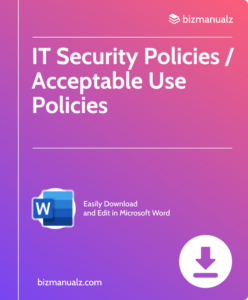CIO IT Compliance Standards

Attention all business leaders! Are you struggling to keep up with the ever-changing landscape of IT compliance standards? Look no further. This article will provide you with crucial insights and strategies to ensure your company is meeting all necessary regulations. Stay ahead of the game and protect your business from potential risks and penalties. CIO IT Compliance Standards.
What is CIO IT Compliance?
CIO IT Compliance refers to the practice of following regulations, laws, and guidelines that are applicable to IT processes and systems within an organization. This includes making sure that IT operations are in line with industry standards, legal requirements, and internal policies, all in order to promote data security and integrity.
Why is CIO IT Compliance Important?
Maintaining CIO IT compliance is crucial for ensuring data security, managing risks, and adhering to legal regulations. It serves to protect sensitive information, minimize potential fines, and establish trust with stakeholders.
Pro-tip: Consistently updating and communicating IT compliance policies can help foster a culture of responsibility and accountability within the organization.
What are the Standards for CIO IT Compliance?
As a Chief Information Officer (CIO), ensuring compliance with industry standards and regulations is a critical aspect of managing an organization’s IT infrastructure. In this section, we will discuss the various standards that a CIO must adhere to in order to maintain compliance within their organization.
These include regulatory compliance, data security measures, risk management protocols, business continuity strategies, and maintaining a secure and efficient IT infrastructure. By understanding these standards, a CIO can effectively safeguard their organization’s data and operations.
1. Regulatory Compliance
- Gain a thorough understanding of the applicable laws and regulations that pertain to your industry and organization.
- Form a dedicated compliance team to monitor and interpret any changes in regulations.
- Implement policies and procedures that are in line with regulatory requirements.
- Conduct regular internal audits to ensure that your organization is adhering to compliance standards.
- Offer ongoing training to employees to keep them updated on regulatory changes and how they may affect the organization.
2. Data Security
CIO IT compliance places great importance on data security, which involves implementing measures to safeguard digital data from unauthorized access, breaches, and corruption.
These measures include encryption, access control, regular security audits, and employee training to mitigate risks. Adhering to data security standards such as GDPR and HIPAA is crucial in ensuring the protection of sensitive information.
Pro-tip: Enhance data security by implementing multi-factor authentication and data encryption.
3. Risk Management
- Evaluate potential risks and vulnerabilities within the IT infrastructure.
- Develop a comprehensive risk management plan outlining strategies for identifying, assessing, and mitigating risks.
- Implement various security measures to minimize the identified risks, including data encryption and access controls.
- Regularly review and update the risk management protocols to address emerging threats and changes in the IT environment.
4. Business Continuity
- Develop a business impact analysis to identify critical systems and processes for effective business continuity.
- Establish contingency plans and procedures to ensure essential functions continue during and after a disruption, as part of the overall business continuity strategy.
- Regularly test the business continuity plan to validate its effectiveness and make necessary improvements for better preparedness.
- Train employees on their roles and responsibilities in executing the business continuity plan, to ensure smooth and efficient execution during a crisis.
5. IT Infrastructure
- Assess current IT infrastructure to identify compliance gaps.
- Implement necessary hardware and software updates to meet compliance standards.
- Establish access control measures to safeguard sensitive data.
- Regularly monitor and assess the IT infrastructure to ensure compliance adherence.
- Train IT personnel on compliance requirements and best practices.
To maintain a robust IT infrastructure compliance, it is important to continuously monitor, regularly update, and provide comprehensive staff training on compliance requirements and best practices.
How to Ensure CIO IT Compliance?
As a Chief Information Officer (CIO), ensuring IT compliance is a crucial responsibility. In order to maintain the security and integrity of your organization’s data, it is essential to have a comprehensive strategy in place. In this section, we will discuss the key steps that CIOs can take to ensure IT compliance.
From implementing robust policies and procedures to utilizing technology solutions, we will explore various methods to safeguard your organization’s IT infrastructure. Let’s dive into the details of how to effectively ensure CIO IT compliance.
1. Implementing Policies and Procedures
- Establish clear and concise policies and procedures for implementing CIO IT compliance.
- Ensure that the policies are aligned with industry regulations and organizational goals.
- Communicate the policies effectively to all employees and stakeholders.
- Regularly review and update the policies to adapt to changing compliance requirements.
- Provide training and resources to support employees in understanding and adhering to the policies and procedures.
The implementation of policies and procedures has been crucial in ensuring CIO IT compliance across various industries, safeguarding sensitive data, and bolstering operational integrity.
2. Regular Audits and Assessments
- Implement routine internal audits and assessments to assess adherence to IT regulations and standards.
- Periodically engage external auditors to conduct an unbiased review of the organization’s compliance with regulatory requirements.
- Utilize automated assessment tools to streamline the process and ensure thorough coverage of IT systems and processes.
3. Training and Education for Employees
- Assess Training Needs: Identify specific knowledge gaps and skill requirements within the organization related to training and education for employees.
- Develop Training Programs: Create customized training modules, including IT compliance policies, data security protocols, and risk management procedures, to provide education and support for employees.
- Implement Training Sessions: Conduct regular workshops, seminars, and e-learning courses to educate employees on IT compliance and training techniques.
- Provide Ongoing Support: Offer continuous guidance, resources, and updates to reinforce employees’ knowledge and practices related to training and education for compliance.
4. Utilizing Technology Solutions
- Implement a robust IT compliance management system to track and ensure adherence to regulatory requirements.
- Utilize automated compliance tools for continuous monitoring and real-time alerts on any deviations.
- Implement encryption and data loss prevention tools to safeguard sensitive information.
- Leverage cloud-based solutions for scalable and secure data storage and management, utilizing the latest technology solutions.
Fact: According to Gartner, by 2025, 50% of global midsize and large enterprises will implement automated IT compliance management tools to enhance operational efficiency and mitigate risks through the use of technology solutions.
What are the Consequences of Non-Compliance?
Maintaining compliance with CIO IT standards is crucial for any organization, but what happens if these standards are not met? The consequences of non-compliance can be severe and far-reaching, affecting not only the company but also its stakeholders.
In this section, we will discuss the various repercussions of non-compliance, including legal and financial penalties, damage to reputation, loss of business opportunities, and disruption of operations. By understanding these consequences, organizations can see the importance of adhering to CIO IT compliance standards.
1. Legal and Financial Penalties
- Fines: Non-compliance with compliance regulations may result in significant financial penalties imposed by regulatory authorities.
- Lawsuits: Violating compliance standards may lead to legal actions and hefty settlements, resulting in high legal expenses.
- Loss of Contracts: Failure to meet compliance standards can result in the loss of business contracts and opportunities, ultimately affecting revenue.
- Higher Insurance Costs: Non-compliance can also lead to increased insurance premiums or even loss of coverage.
2. Damage to Reputation
Non-compliance with CIO IT standards can have damaging effects on a company’s reputation, resulting in decreased consumer trust, reluctance from investors, and challenges in attracting top talent.
In 2017, Equifax experienced a significant data breach that exposed sensitive information of 143 million individuals. This incident greatly impacted their reputation and resulted in the resignation of top executives.
3. Loss of Business Opportunities
Non-compliance with CIO IT standards can lead to the loss of business opportunities. Failure to adhere to regulations may result in disqualification from bidding on projects or securing contracts with partners who prioritize compliance.
To mitigate this risk, businesses should invest in robust compliance measures, stay updated on regulatory changes, and prioritize proactive compliance efforts, ensuring they align with industry best practices.
4. Disruption of Operations
Disruption of operations due to non-compliance with CIO IT standards can have serious consequences, including system downtime, productivity losses, customer dissatisfaction, and revenue reduction. To minimize these risks, companies should prioritize regular risk assessments, invest in strong IT infrastructure, and provide ongoing training to employees to ensure smooth operations and compliance adherence.
Frequently Asked Questions

What are CIO IT Compliance Standards?
CIO IT Compliance Standards refer to a set of rules and regulations that aim to ensure that an organization’s IT infrastructure and processes are in line with legal and industry requirements.
What is the role of a CIO in IT compliance?
A CIO (Chief Information Officer) is responsible for overseeing the implementation and maintenance of IT compliance standards within an organization. They work closely with other departments and stakeholders to ensure that all systems and processes are compliant.
Why is compliance important for an organization?
Compliance is crucial for organizations as it helps them avoid legal and financial penalties, maintain customer trust, and protect sensitive information. It also ensures that businesses operate ethically and in line with industry best practices.
What are some common IT compliance standards?
Common IT compliance standards include GDPR (General Data Protection Regulation), HIPAA (Health Insurance Portability and Accountability Act), PCI DSS (Payment Card Industry Data Security Standard), and ISO (International Organization for Standardization) standards.
How can an organization stay updated with changing compliance regulations?
Organizations can stay updated with changing compliance regulations by regularly conducting compliance audits, staying informed about industry updates and changes, and partnering with compliance experts or consultants.
What are the consequences of non-compliance?
The consequences of non-compliance can range from financial penalties and legal consequences to loss of customer trust and damage to reputation. It can also lead to operational disruptions and loss of business opportunities.
















Leave a Reply